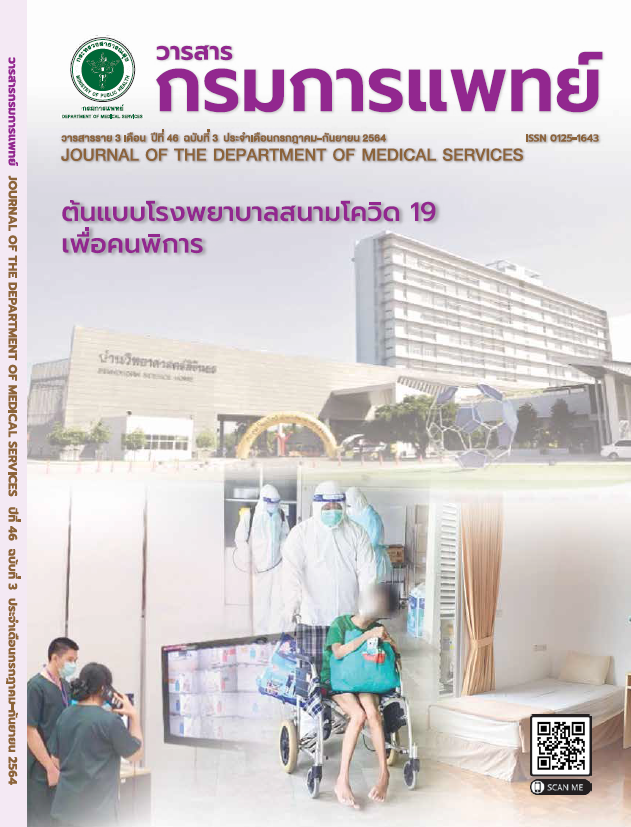Restoration of Enamel Hypoplasia Teeth with Ceramic Onlays: a Case Report
Keywords:
Enamel hypoplasia, Onlay, Indirect restorationAbstract
Enamel hypoplasia is a defect of the teeth in which the enamel is deficient in quantity. The etiology of enamel hypoplasia may be the result of hereditary, systemic, or local factors that disturb during tooth development. The characteristic is seen clinically as tooth discoloration, pits, grooves, localized or generalized lack of surface enamel. Treatment for such defects can differ, depending on the severity of the defects. This case report presents the funtional rehabilitation of the patient diagnosed with enamel hypoplasia in the permanent first molars. The teeth were restored with the ceramic onlays by using monolithic zirconia material. The treatment plan enable the restoration and improvement of function, resulting in patient satisfaction.
References
Seow WK. Enamel hypoplasia in the primary dentition: a review.ASDC J Dent Child 1991; 58:441–52.
Salanitri S, Seow WK. Developmental enamel defects in the primary dentition: aetiology and clinical management. Aust Dent J 2013; 58:133–40.
Wright JT. The molecular etiologies and associated phenotypes of amelogenesis imperfecta. Am J Med Genet A 2006; 140:2547–55.
Weerheijm KL. Molar incisor hypomineralization (MIH): clinical presentation, aetiology and management. Dent Update 2004;31:9–12.
Ruschel VC, Araújo É, Bernardon JK, Lopes GC. Enamel hypoplasia: challenges of esthetic restorative treatment.Gen Dent 2016; 64:75–8.
Martos J, Gewehr A, Paim E. Aesthetic approach for anterior teeth with enamel hypoplasia. Contemp Clin Dent 2012; 3:S82-5.
da Cunha Coelho ASE, Mata PCM, Lino CA, Macho VMP, Areias CMFGP, Norton APMAP, et al. Dental hypomineralization treatment: A systematic review. J Esthet Restor Dent 2019;31:26–39.
Veneziani M. Posterior indirect adhesive restorations: updated indications and the morphology driven preparation technique.Int J Esthet Dent 2017; 12:204–30.
Miyazaki T, Nakamura T, Matsumura H, Ban S, Kobayashi T.Current status of zirconia restoration. J Prosthodont Res 2013;57:236–61.
Janyavula S, Lawson N, Cakir D, Beck P, Ramp LC, Burgess JO.The wear of polished and glazed zirconia against enamel. J Prosthet Dent 2013; 109:22–9.
Kern M, Wegner SM. Bonding to zirconia ceramic: adhesion methods and their durability. Dent Mater 1998;14:64–71.
de Oyagüe RC, Monticelli F, Toledano M, Osorio E, Ferrari M,Osorio R. Influence of surface treatments and resin cement selection on bonding to densely-sintered zirconium-oxide ceramic. Dent Mater 2009; 25:172–9.
Blatz MB, Chiche G, Holst S, Sadan A. Influence of surface treatment and simulated aging on bond strengths of luting agents to zirconia. Quintessence Int 2007; 38:745–53.
Tanaka R, Fujishima A, Shibata Y, Manabe A, Miyazaki T.Cooperation of phosphate monomer and silica modification on zirconia. J Dent Res 2008; 87:666–70.
Mangano F, Gandolfi A, Luongo G, Logozzo S. Intraoral scanners in dentistry: a review of the current literature. BMC Oral Health 2017; 17:149-59.
Downloads
Published
How to Cite
Issue
Section
License
Copyright (c) 2021 Department of Medical Services, Ministry of Public Health

This work is licensed under a Creative Commons Attribution-NonCommercial-NoDerivatives 4.0 International License.
บทความที่ได้รับการตีพิมพ์เป็นลิขสิทธิ์ของกรมการแพทย์ กระทรวงสาธารณสุข
ข้อความและข้อคิดเห็นต่างๆ เป็นของผู้เขียนบทความ ไม่ใช่ความเห็นของกองบรรณาธิการหรือของวารสารกรมการแพทย์



